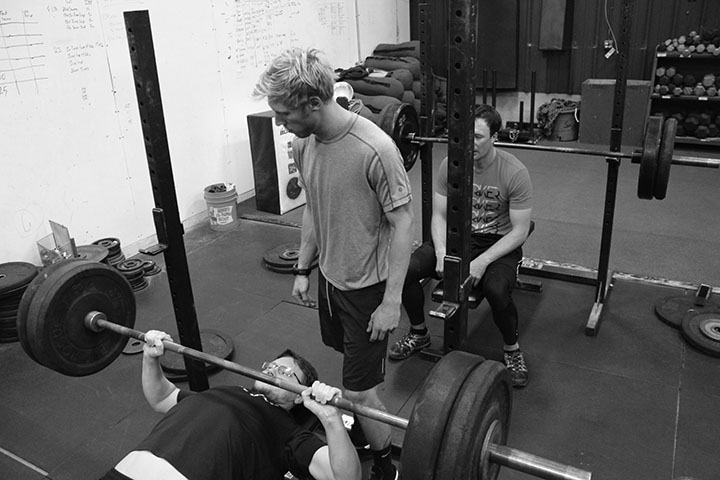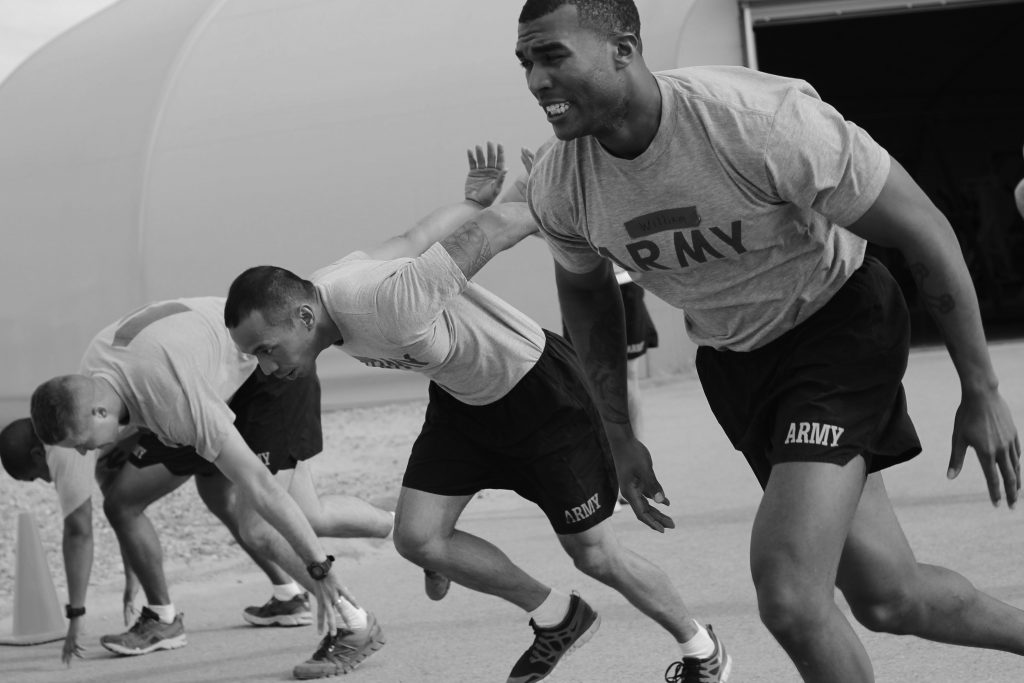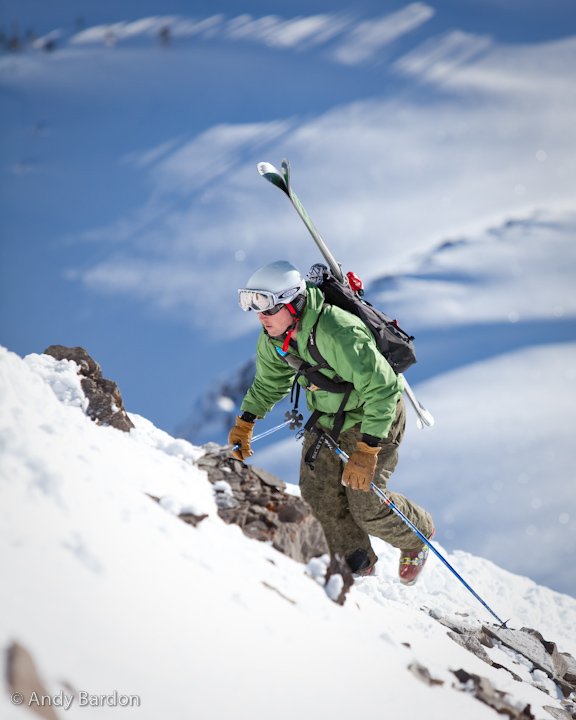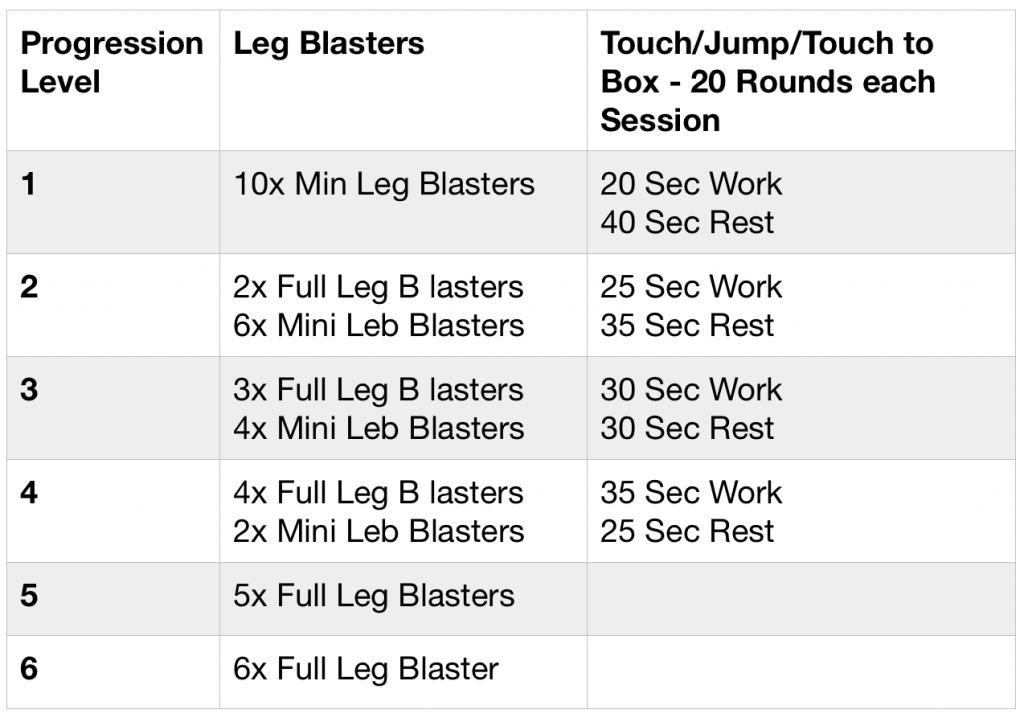QUESTION
What are your thoughts on the new Army Combat Fitness Test? How do you best recommend we prepare for it? And is there a program in the works that you guys are making that is designed specifically for it? I’m currently enjoying the bodyweight training plan minus the upper body movements because of straining both my shoulders during a recent triathlon. Thanks and hope to hear from you soon!
ANSWER
My Thoughts:
Train for it:
– Rob
QUESTION
I’m a 59 year old female Air Force veteran, looking for a year’s worth of programing to get me ready for a trip on the Inca Trail & Machu Pichu in Sept 2020. I need a plan that I can substitute bicycling for running. I hike/backpack in the summer months and strength train at a gym twice a week. Any recommendations? Thanks
ANSWER
Biking? The SF45 Programming has a significant endurance focus … for the prescribed running you can bike, just double the prescribed distance.
Note … the SF45 Programming is designed for athletes ages 45-55 … it may be too intense for you at 59. I’d recommend trying a sample week of programming first to see how you recover.
– Rob
QUESTION
I’m heeding your advice and asking for help on my programming.
I’m trying to improve my run…but I feel like not progressing. I’m using your Run Improvement plan, not because I like to run but because it’s an easy measuring stick.
Consistently has been mediocre. 2-3 days of plan per week, but in order, slight scaling on strength days.
Almost 45 years old.
5k 28 minutes. I’d like to see it under 25.
Weight keeps dropping…from 170 to 157 in the last 6-9 months. BF only slightly 20% to 15%.
6’ tall, I look better than I feel and work.
It may just be a function of age.
So, I expect you to tell me…do more work per week…Will do, but if the goal is cardiovascular without losing mass, do I switch plans (SF45?) or stay the course? I’m not opposed to walking, swimming or rowing, but I just don’t know how to measure my performance in those arenas.
Thanks for your good work and help,
ANSWER
I’m not too sure what you are asking here?
Don’t’ discount the strength programming in the Running Improvement Plan, but if you’re not following the programming as prescribed, I can’t do much for you.
It seems you’re increasing muscle, and decreasing fat, while losing weight.
If you want a more rounded plan, yes, at your age, I’d recommend the SF45 programming, but again, if you don’t follow the programming, I can’t help.
– Rob
QUESTION
Just purchased the membership and had a question from what is likely an odd circumstance.
I dropped out of BUD/S 1st phase week 2 only 2 weeks ago, spent the past few weeks just recovering injuries and illness doing some randomized workouts but am ready to get back into training.
No concrete timeline but my intent is to go through SFAS in the next 6 months.
I was planning on hitting the ruck based selection program v5 but, on review, feel it is too probably too soon to get that specific with no clear date in sight. In that case, it seems likely more effective rebuilding maybe gpp while targeting weaknesses then switch over to that program when it gets closer to selection.
The question, then, is what program or combination of programs would you recommend at this time?
For background:
That was my 2nd attempt at bud/s after having trained several years for it. Generally I gravitate towards resistance training and lacked on running and swimming. No intent to boast though for ref I’m 5’4″ and was always top 10 anytime strength was calculated into performance metrics (independent of weight). I run a 9-9:30 1.5 and my 4 mile beach run in boots was always around 29 or so; 28:52 track time after a 1000m swim, push sit and pullup events. I can be relatively faster at any distance up to 400m but really maintenance of that speed for distance I struggled.
I know its only been 2 weeks out of the pipeline but I feel out of shape and I doubt buds helped my baseline fitness in any way other than performance under a boat or log so its possible those run times arent current either. I also understand SFAS is an entirely different beast to be respected and trained for in its own manner.
I apologize for the long message but was hoping, as convenient, you may have some guidance on where to start for the next few months. Very interested in a professional perspective.
Thank you very much for your time and assistance. Please feel free to reach out if you need any additional information or even compensation to help answer the question.
ANSWER
– Rob
QUESTION
I have used your systems for a few years now on a few climbs….Rainier and Kili.
I don’t have anything really planned other than some resort skiing around Christmas and possibly a mountain next summer
Just finishing up the Bodyweight foundation this week. Was looking at Humility and suggestions for the next program.
I’ll be 47 next week and live in the flatlands.
ANSWER
I’d recommend you drop into the
SF45 Programming – which is designed for mountain/tactical athletes ages 45-55. Start with SF45 Alpha.
– Rob
QUESTION
I am currently doing the FBI PFT training and had a question about sprints and runs.
I have an outside 400 meter track, however on days that it’s raining like today i cannot use it and i do not have access to an indoor 400 meter track.
Can i do my sprints on the treadmill or no?
ANSWER
Best to run in the rain.
– R
QUESTION
Rob, I’ve done your kB progression program a while back. I bounce through different things but always stay consistent in doing something, right or wrong, 4-6x a week. My hobby of choice, which as the kids get older and time is allowing more of, also them wanting to get involved makes it a lot easier. I like to race off road dirt bike races. You can look up GNCC to see what I’m talking about. The actual race day is laid out like this.
45 minute practice (this is more of a sight lap 50% pace to get a feel of the course)
1hour 30 minute break
70 minute race for as many laps as possible
I would like a program that will help with my endurance and strength for this type of event. I do almost all my work outs during lunch and can do longer duration stuff early weekend mornings. Any help would be great.
ANSWER
Substitute Saturday’s trail run for a 2-3 hour dirt bike effort.
– Rob
QUESTION
I resubscribed a few weeks ago and have enjoyed getting back into the programming. I’ll be doing the American Birkebiener 50km nordic (skate) ski race in February and was wondering if there’s a plan that would get me ready for it while at the same time maintaining overall strength/work capacity for my day job as a firefighter.
ANSWER
Do the
Ultra Pre-Season Training Plan, and substitute skate skiing or roller skate work for the running in the plan. The plan includes bodyweight strength – and should maintain your fire fighter fitness until after the race. The distance work in the Ultra Pre-Season Plan fits well with a 50K effort.
– Rob
QUESTION
I know this question is complicated and multifactoral, but on average how much quicker on our diagnostic weekly 3mile (for time) should be we getting? I’m on week 5 and my time got better by a measly 22 seconds. Btw, Your program is great. I get smoked at every session.
ANSWER
In general, the less fit you are starting out, the greater the fitness improvement you’ll see. The more fit you are starting out, the less you’ll improve.
So, depending on where the athlete is coming in, we’ll see a 5-20% improvement over the course of a 7 week cycle … so you’re looking at a 2.5-5% improvement at 3 weeks.
– Rob
QUESTION
I’m a new subscriber to MTI completing week 3 of Bodyweight Foundation. I’m a 33 year old, 6′-3″ 180# male (tall and lanky) with an initial goal to get in ski shape for a 1st time ski vacation in February, but also to improve my overall fitness. I’m looking at completing the Dryland Ski Training Plan V5 in the 7 weeks prior to my trip, but wanted to know any recommendations for interim training in the 9 or so weeks after completing Foundation.
I’ve never spent much time in the gym or concentrated on my fitness in general, but have seen a significant improvement in endurance and conditioning since beginning my subscription to MTI. Your program has been an inspiration for me to get back in the game and jumpstart a fitness lifestyle.
Keep up the good work and I look forward to your feedback.
ANSWER
– Rob
QUESTION
I am a K9 handler with the state police. I am currently working on the On Ramp program. My question is it ok to complete the training as a 3 day a week program? I am older 47. And also am responsible for getting both my K9 partners their cardio which I currently have them both run one mile twice a week. My training, my K9’s training and trying to have a family life is the reason for my question. Thank you in advance
ANSWER
Yes … but follow the sessions in order… don’t skip ahead.
– Rob
QUESTION
I have just completed Military-On Ramp Program and took 5 days of complete rest. I have been looking at the SFAS Training Packet to figure out the next 8 weeks of training before I start the Ruck-Based Selection Training Plan then I saw to email about specific guidance if we don’t have the time to complete all. I was thinking about stacking Big 24 with Fortitude for 2-a-days but wanted to see what y’all at Mountain Tactical would suggest.
Thank you for your time and your programming.
ANSWER
Fortitude alone. Take a full week off before starting the Ruck Based Selection Training Plan.
– Rob
QUESTION
I’ve used your training plans to great effect and I just completed a GORUCK Star Course 50 Miler in NYC this past weekend. Right now, my plan is to rest and recover so that my feet can heal and I can eventually get back to my regular exercise regimen. I haven’t done much athletic training aside from a few weeks of rucking in preparation for the Star Course and I want to get back to CrossFit and regain my strength, work capacity, etc.
What plan? Thank you for your time and consideration.
ANSWER
From our stuff,
Johnny. This plan concurrently trains strength, work capacity, endurance, and chassis integrity.
Understand, however, that MTI is not Crossfit … so if you’re looking for Crossfit, I can’t help.
– Rob
QUESTION
I am starting a reserve firefighter position with my local County Fire Authority and was interested in using the mtn wildland firefighter plans to prepare for next fire season. I live in Southern California so my access to trails of varying terrain, length and slope are plentiful and I love hitting the trails but the gym, not so much. I was wondering if rather than doing step ups in the gym it would be acceptable to use hikes for elevation gain instead, and if so how could I convert step up volume/progression to the trails? Thank you for any and all advice!
ANSWER
Sure … but if the plan calls for loaded step ups, you must hike loaded as well. I use water for load – 1x Gallon = 8 pounds, and at the top, dump the load to save my knees for the run down.
Conversion – assume a 17″ step for every step up, so if the plan calls for 1,000x step ups, this = 17,000 inches = 1,416 vertical feet. You must hike up this much vertical. Use google earth to determine the vertical gain for your route/hill.
– Rob
QUESTION
I’m a Marine 2ndLt and have been doing the Rat 6 program, but I’m realizing I need more endurance training for running. I always feel as though I’m trying to maintain one type of fitness, but then lose out on another area and I don’t want to train specifically for a PFT/CFT. I’m also a very active climber, but unfortunately Pensacola, FL has no climbing and I find it hard to train for my hobbies. While I know there is no such thing as a plan that incorporates every single thing I’ve mentioned; I’m trying to find a workout plan that will set me up with a day to day plan for functional fitness, prepare me for my PFT/CFT, and give me a base level of climbing preparation(in the event I take a trip to Colorado or Wyoming). I have tried pairing a couple workout plans together, but at some point I run into schedule conflicts and can’t take 2 hrs out of my day to workout. For whatever workout you guys recommend I’d prefer a workout with a military focus.
ANSWER
Hector, from our
Greek Hero Series for military. These plans concurrently train strength, work capacity, military endurance (run/ruck), chassis integrity (functional core) and tactical agility.
– Rob
QUESTION
I am finishing a 12 week strength program with zero running this year. I have four weeks to go to finish the current program before starting the Rookie Training packet. My current plan is M-F with weekends off, Tues and Thu are correctives and mobility.
Week one of Bodyweight Foundations has a 30:00 run and I don’t want to start off right into that.
What would be a good progression to add into my current program (perhaps on weekends or the Tues/Thu correctives/recovery days) over these next four weeks to ease me into starting running again?
ANSWER
Run/Walk as needed to get to 30 minutes.
– Rob
QUESTION
I’m a federal law enforcement officer, and I’m looking for a program that will either improve or maintain strength while also improving endurance and conditioning. I’m primarily a gang investigator, and I’m prepping for SWAT tryouts in the next couple of months. Caveat: I’m in my 40s and starting to feel the years some. Any suggestions?
ANSWER
Plans/order in the
Gun Maker Packet – these plans are designed as day to day training for full time SWAT/SRT, and concurrently train strength, work capacity, endurance (run/ruck), chassis integrity (core) and tactical agility. Start with
Ruger– the first plan in the packet.
Age? Don’t have a good answer for you here. LE is unlike military, and LE athletes can be at the tip of the spear in daily ops well into your 50s. Military athletes in their 40/50s are in leadership positions and don’t face the exposure many LE athletes do. As you know better than I, the fitness demands of a tactical situation don’t discriminate based on the age of the officer. Correspondingly, the plans in the Gun Maker packet are designed around the fitness demands of the mission, not the individual athlete.
– Rob
QUESTION
Is there any exercises one can do to train for 9000-12000 vertical short of going to high altitude? I live at sea level.
ANSWER
Nothing in the research has shown a way to game the effect of altitude on air pressure. Some try sleeping in a chamber at night … but the results seem inconclusive for this and it’s an expensive risk.
Our approach is to be as sport-specifically fit as possible – this means uphill hiking under load, primarily.
– Rob
QUESTION
I’m an aspiring SEAL and I was doing your BUD/S Prep plan and ended up with what doc says is just ITBS, which has kept me from running for going on 7 weeks now. I’m guessing that means I wasn’t ready for that plan, so I was looking at some of your base fitness plans to build up strength and durability before going back to that plan, as I’ve had a few little nagging joint issues in the last few months. But I felt like the base fitness programs didn’t have as much swimming as someone training for BUD/S would need (especially one who can’t run as of right now). What would you recommend?
Thank you!
ANSWER
Bodyweight Foundation Training Plan, and sub the running the plan for swimming. Not sure your swimming level now, but I’d suggest doubling the prescribed running time and swimming that instead.
– Rob
QUESTION
I have been using mountain tactical online now for around one month. I love it.
I have looked over many, many of the workouts and there are tons. I have been doing “Johnny” and found it challenging and awesome. I look forward to trying some of the others as well.
I was wondering if you had any suggestions. I am a 34 year old dentist and was a college athlete once upon a time. I am looking to maintain a base level of exceptional fitness/functional strength and to challenge myself in training. At the same time, I use my body to do my job and don’t want to send my back down the “old man road” any time soon.
Thanks in advance for your input.
ANSWER
Continue to follow the plans in the Country Singer Packet – this means
Waylon next. These plans are progressive on a macro scale and designed ideally to be completed in order.
– Rob
Subscribe to MTI's Newsletter - BETA






